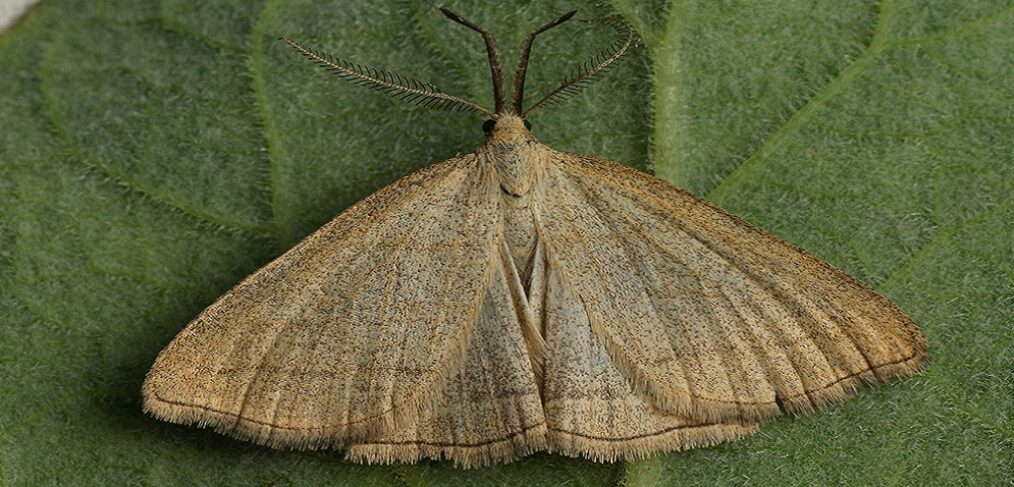
Species of the week #94 – Palpin moth (Polypogon tentacularia)
A sensing thread that can smell and taste at the same time sounds like science fiction, but it is reality: the palpine moth has such an organ. The owl butterflies got their name because they are crepuscular and nocturnal. Their antennae, called palps, are particularly well developed and give the moth its name. Palps are not an additional pair of antennae, but a kind of tactile tool that also carries olfactory and gustatory receptors. The palps are often densely hairy.
| Status in Rhineland-Palatinate | Threatened with extinction |
| Risidual occurane | Baden-Württemberg, Austria, Switzerland |
| Last sighting in Rhineland-Palatinate | 1987 in Harthausen |
| Habitat | Nutrient-poor forest edges, juniper heaths |
| Threat | Extensification of forestry and agriculture, eutrophication, light pollution |
The male palpin moth reach wingspans of up to 30 millimetres. The females are much smaller and usually somewhat darker in colour. The forewings are yellowish brown to light brown and bear three wavy to slightly jagged, dark brown transverse lines, which can vary in intensity.
The caterpillars live in the ground litter and feed mostly on yellowing or dead plant parts. However, tender leaves of still living plants are also eaten. The young caterpillars are somewhat translucent and slightly hairy. The caterpillars pupate in a cocoon directly on the ground and overwinter in this way. The development into a moth sometimes even takes place in the year after next. The moths are sensitive to light pollution, as they are attracted to the light and often buzz around the lamps until they fall to the ground, exhausted.
In Europe, there has been a slow but steady decline in Palpin moths. The main reason is their preference for nutrient-poor sites with abundant dry foliage. In addition, the soil must be loose and uncompacted enough for the caterpillar to burrow into it and pupate. Due to modern forestry, however, forest soils are now often highly compacted. Nutrient inputs from industry, agriculture and motorised traffic destroy nutrient-poor sites. If this is compounded by light pollution, which prevents the adult moths from reproducing, the decline is pre-programmed. In Rhineland-Palatinate, the palpine moth has been extinct since 1987.
Click here for more exciting species of the week
Image: By Ilia Ustyantsev – Polypogon tentacularia, CC BY-SA 2.0, https://commons.wikimedia.org/w/index.php?curid=67455162
